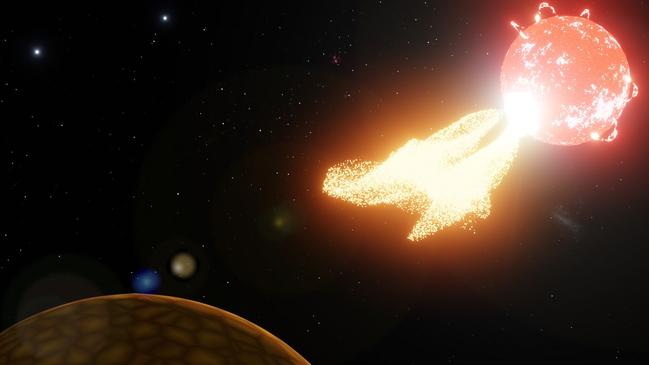Bad space weather hits hunt for life
The first space ‘weather report’ from the Sun’s closest neighbours has dealt a blow to hopes of discovering life on other planets.

The first space “weather report” from the Sun’s closest neighbours has dealt a blow to hopes of discovering life on other planets.
Astronomers hoped two “Earth-like” rocky planets just 4.2 light years away near a small, red dwarf sun named Proxima Centauri might have the right conditions for life.
Pulling together radio and optical telescopes across the planet and space, including NASA’s Transiting Exoplanet Survey Satellite, lead researcher Andrew Zic had set out to find a definitive link between optical flares and radio bursts on a star other than the Sun.
But his discovery has probably blown a hole through any hopes of finding life near the star, with the blasts of ionising radiation probably proving fatal to the vulnerable planets.
“The goal was to see optical flares, so a very powerful outburst of radiation, and try to see if we could associate that with any radio burst activity that resembles what we see on the Sun,” Mr Zic told The Australian.
“We had 11 nights of observations and on one of the nights we saw a very powerful flare, followed by a very strong blast of radio waves that resembles what we see on the sun in the form of a type four dust.
“And so this, we think, is a very good indication of the space weather activity around Proxima Centauri.”
After years of uncertainty, Mr Zic’s discovery supports astronomers’ concerns about violent space weather.
“You literally blow away the magnetic field and atmosphere of the planet,” Mr Zic said.


